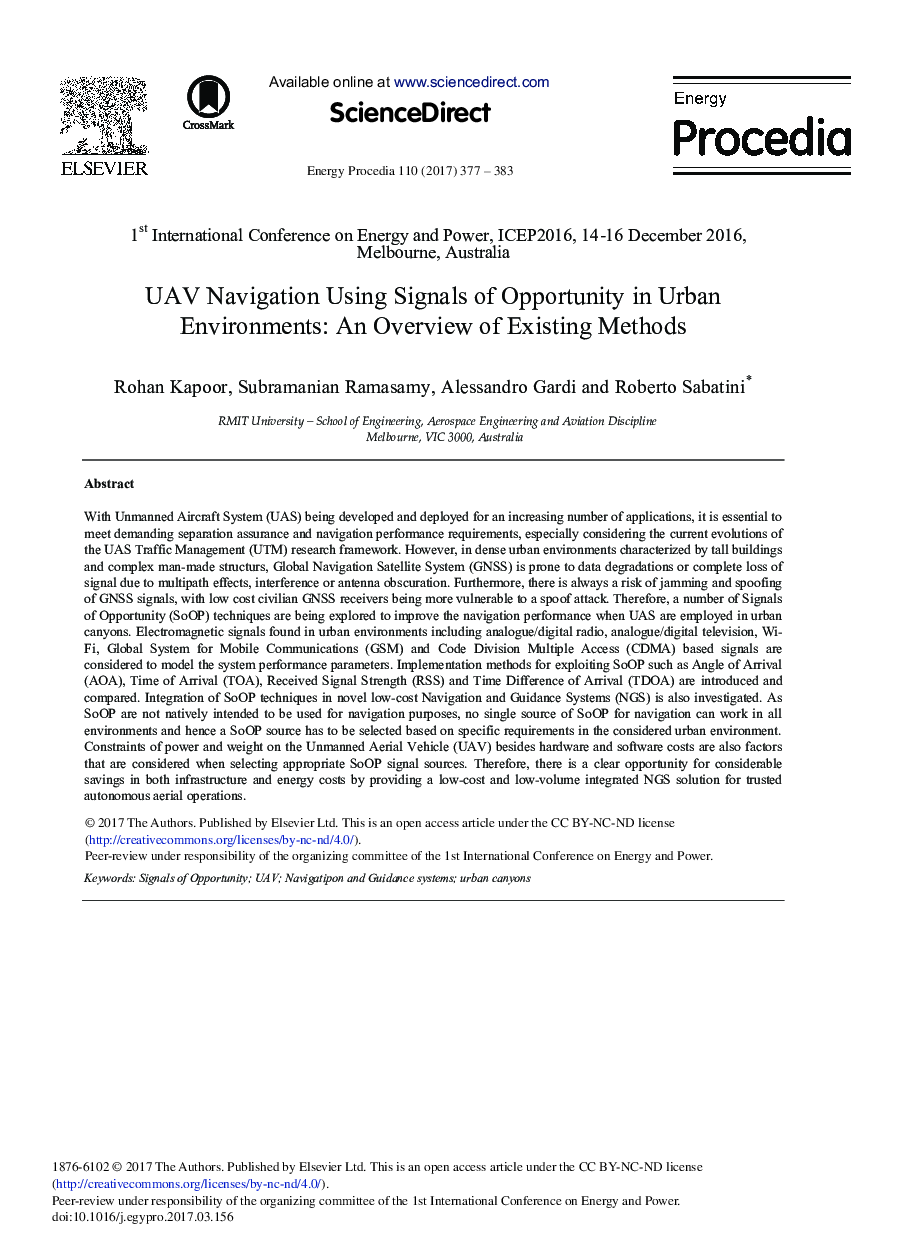| کد مقاله | کد نشریه | سال انتشار | مقاله انگلیسی | نسخه تمام متن |
|---|---|---|---|---|
| 5445755 | 1511125 | 2017 | 7 صفحه PDF | دانلود رایگان |
عنوان انگلیسی مقاله ISI
UAV Navigation using Signals of Opportunity in Urban Environments: A Review
ترجمه فارسی عنوان
کنترل ناو هواپیما با استفاده از سیگنال های فرصت در محیط های شهری: یک مرور
دانلود مقاله + سفارش ترجمه
دانلود مقاله ISI انگلیسی
رایگان برای ایرانیان
کلمات کلیدی
موضوعات مرتبط
مهندسی و علوم پایه
مهندسی انرژی
انرژی (عمومی)
چکیده انگلیسی
Novel Communication, Navigation and Surveillance (CNS) systems are currently developed targeting the Required Total System Performance (RTSP) levels. Within RTSP, it is essential to meet the Required Navigation Performance (RNP) in all flight phases, especially considering the Unmanned Aerial System (UAS) evolutions in the UAS Traffic Management (UTM) context. However, in dense urban environments characterized by tall buildings and complex structural variations, Global Navigation Satellite System (GNSS) is prone to data degradations or complete loss of signal due to multipath effects, interference or antenna obscuration. Furthermore, there is always a risk of jamming and spoofing of GNSS signals, with low cost civilian GNSS receivers being more vulnerable to a spoof attack. Therefore, a number of Signals of Opportunity (SoOP) techniques are explored to improve the RNP when Unmanned Aerial Vehicles (UAV) are employed in urban canyons. Electromagnetic signals found in urban environment including analogue/ digital radio, analogue/digital television, Wi-Fi, Global System for Mobile Communications (GSM) and Code Division Multiple Access (CDMA) based signals are considered to model the system performance parameters. Implementation methods for using Signals of Opportunity such as Angle of Arrival (AOA), Time of Arrival (TOA), Received Signal Strength (RSS) and Time Difference of Arrival (TDOA) are modeled and compared. Integration of SoOP techniques in novel low-cost Navigation and Guidance Systems (NGS) is also investigated. As SoOP were not initially designed for navigation purposes, no single source of SoOP for navigation can work in all environments and hence a SoOP source has to be selected based on specific requirements in the considered urban environment. Constraints of power and weight on the UAV besides hardware and software costs are also factors that are considered when selecting appropriate SoOP signal sources. Hence, there is a clear opportunity to provide considerable savings in both infrastructure as well as energy costs and thus providing a low-cost and low-volume integrated NGS for trusted aerial autonomous operations.
ناشر
Database: Elsevier - ScienceDirect (ساینس دایرکت)
Journal: Energy Procedia - Volume 110, March 2017, Pages 377-383
Journal: Energy Procedia - Volume 110, March 2017, Pages 377-383
نویسندگان
Rohan Kapoor, Subramanian Ramasamy, Alessandro Gardi, Roberto Sabatini,
